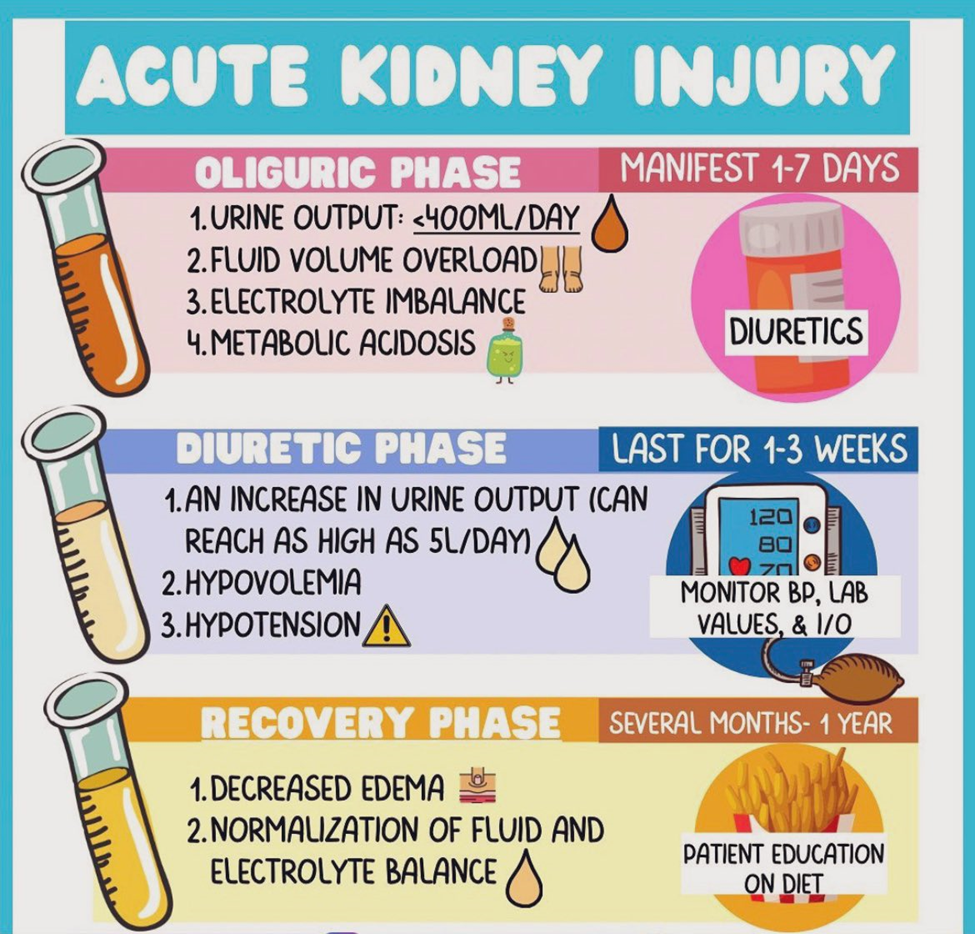The nurse is performing the preoperative assessment for a client scheduled for a vertebroplasty of the cervical spine. Which finding should the nurse alert the healthcare provider of prior to the procedure?
Platelet count 40,000 x10/μL (40.000 x109/L).
White blood cells 9,000/μL (9x109/L)
Hematocrit 38% (0.38).
Hemoglobin 12 g/dL (120 g/L).
The Correct Answer is A
A. Platelet count 40,000 x10/μL (40.000 x109/L):
This is the correct answer. A platelet count of 40,000 x10/μL is significantly below the normal range (usually around 150,000 to 450,000/μL). Low platelet count (thrombocytopenia) can increase the risk of bleeding during and after a surgical procedure. The healthcare provider should be alerted to assess the risk and determine the appropriate management.
B. White blood cells 9,000/μL (9x109/L):
The white blood cell count is within the normal range, and it is not a significant concern for a vertebroplasty procedure.
C. Hematocrit 38% (0.38):
The hematocrit level is within the normal range and is not a significant concern for a vertebroplasty procedure.
D. Hemoglobin 12 g/dL (120 g/L):
The hemoglobin level is within the normal range and is not a significant concern for a vertebroplasty procedure.
Nursing Test Bank
Naxlex Comprehensive Predictor Exams
Related Questions
Correct Answer is A
Explanation
A. Hypovolemia and electrocardiographic (ECG) changes:
During the diuretic phase of AKI, there is an increased urine output, and the risk of dehydration and hypovolemia is elevated. The nurse should closely monitor fluid balance to prevent dehydration, and ECG changes may occur due to electrolyte imbalances (such as hypokalemia) associated with diuresis.
B. Uremic irritation of mucous membranes and skin surfaces:
Uremic symptoms are more prominent in the oliguric phase of AKI when waste products accumulate in the blood. In the diuretic phase, the focus shifts more toward managing fluid and electrolyte balance.
C. Side effects of total parental nutrition (TPN) and Intralipids:
TPN and Intralipids are not directly related to the diuretic phase of AKI. Monitoring for side effects of TPN and Intralipids may be relevant in other clinical contexts but is not the primary concern in the diuretic phase.
D. Elevated creatinine and blood urea nitrogen (BUN):
Monitoring creatinine and BUN levels is important for assessing kidney function, but in the diuretic phase, the focus shifts to managing fluid and electrolyte balance. The risk of hypovolemia and electrolyte imbalances is more immediate during this phase.

Correct Answer is ["0.4"]
Explanation
Step 1: Use the Formula
mL = units prescribed ÷ units per mL
Step 2: Plug in the Given Values
mL = 200,000 ÷ 500,000
Step 3: Simplify the Fraction
mL = 2 ÷ 5
Step 4: Convert the Fraction to a Decimal
mL = 0.4 mL
The nurse should administer 0.4 mL of penicillin to this client.
Whether you are a student looking to ace your exams or a practicing nurse seeking to enhance your expertise , our nursing education contents will empower you with the confidence and competence to make a difference in the lives of patients and become a respected leader in the healthcare field.
Visit Naxlex, invest in your future and unlock endless possibilities with our unparalleled nursing education contents today
Report Wrong Answer on the Current Question
Do you disagree with the answer? If yes, what is your expected answer? Explain.
Kindly be descriptive with the issue you are facing.
